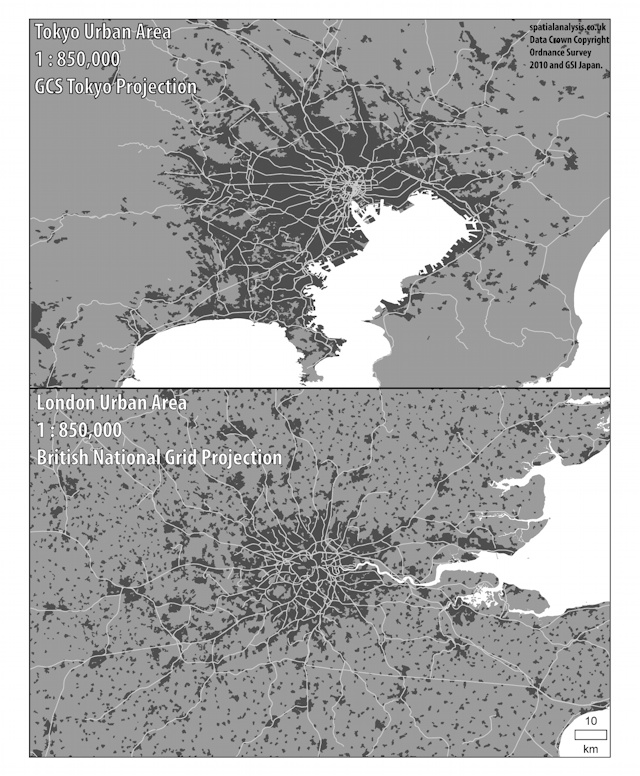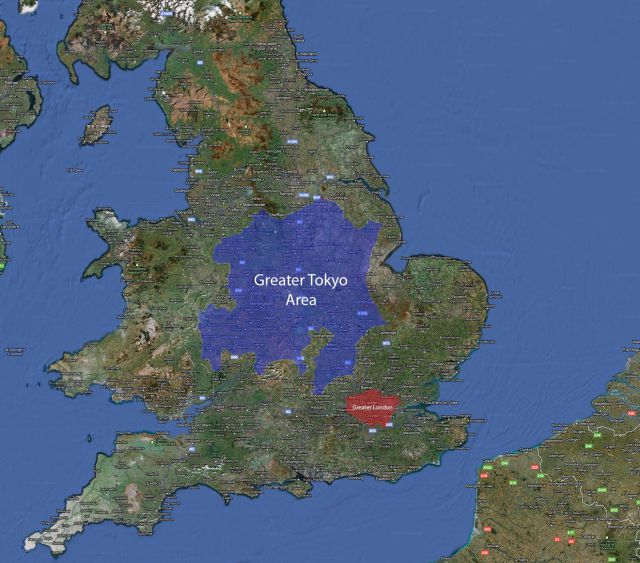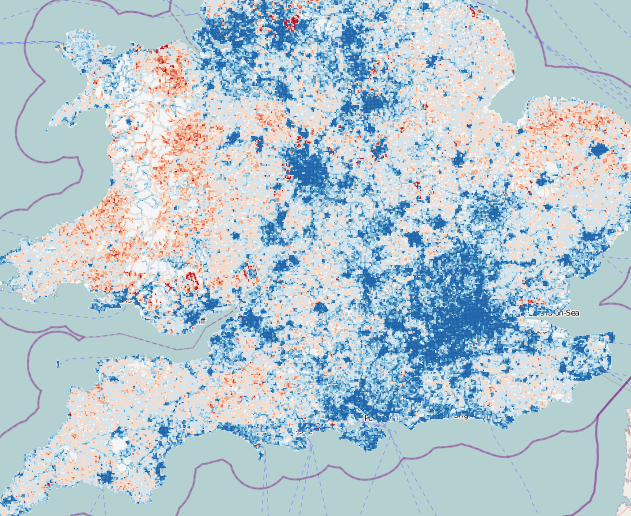
A recent discovery, revealed at the Where 2.0 conference, of a hidden file on iOS4 iPhones and iPads (and on computers that they are synchronised to) is proving to be rather interesting find. The file contains a couple of tables – ‘CellLocation’ and ‘WifiLocation’ that contain records showing times, locations and accuracies of mobile phone masts and wifi points that your phone has come across. [Update: Or more likely, ones that you might expect to come across, based on your current measured location or existing detected masts/wifi.] iPhoneTracker is a great utility which finds the file, parses and displays a gridded heatmap of the places that your iPhone thinks you’ve been to. In my case, it reveals my various trips around London, to towns in England and my travels up to and around the Scottish Highlands in the New Year.
Here’s what a bit of the wifi data on my phone looks like:

You can even see all the MAC addresses of the wifi points (and their locations/accuracies) – again this is nothing you couldn’t collect, and indeed is what Google was busy collecting with their StreetView cars, along with the 360-degree photos. Unfortunately for Google, they also collected the unencrypted data coming from some of these wifi points, which landed them in a bit of bother.
The iPhoneTracker application, as run, grids the data to 1/100th-degree latitude and longitude squares, and only looks at the mobile-phone mast data, rather than the wifi data, as the latter is more likely to be inaccurate (it’s reliant on a look-up database which can go out of date quickly). However, a simple change and recompile of the application in XCode (it’s open source) allows a more accurate map to be included, along with the wifi data if so desired.
The map above shows my travels around London in the last few months, including both the mobile-phone mast and wifi data – the former is generally less accurate and so your location tends to wander, so it shows as circular clumps of small yellow dots. The latter is more concentrated so shows up as the red/purple larger dots, but in fewer locations.
As well as the positional random inaccuracy of the cell-phone triangulations, resulting in these distinctive circles of yellow dots, there is sometimes a systematic inaccuracy. I am 99% sure I haven’t been to East Ham/Barking in the last nine months, but there’s a distinctive clump around there (far right of the screenshot above.)
I’m not going to get into the debate about why Apple has persisted such a file on your phone (and in the computer backup) or whether it’s a good thing that this data is so easily accessible. It’s nothing that’s not on the mobile phone companies’ own databases. The big deal is now you can play with your own location data (and so can someone swiping your computer.) I guess if you don’t have any secrets to hide it’s a great, if imprecise, insight into your spatio-temporal life – tracking how you move around your hometown and indeed the world (my set includes my recent trips to Sicily and Prague).
The background map is from OpenStreetMap. iPhoneTracker is proving so popular, since it was revealed yesterday, that it has quadrupled the normal daily number of map images being served from the OpenStreetMap servers. The gridded visualisation is from OpenHeatMap, written by the same author as iPhoneTracker itself. It’s a great way of showing imprecise, large-volume spatial data like this.










 The exhibition is in three main sections – downstairs there are a number of big screens, showing the aforementioned animations. The area is quite dark, so the graphics have come out really well. The second section is up a spiral staircase (easy to miss) where a number of touch-screen computers show more visualisations from CASA and others, each selectable by the user. The system that runs this will allow us to update the animations during the course of the exhibition, so if we do some newer related work, you may well see it here! Behind this is the last section, which is more conceptual, with a number of “visions of the future from the past” magazine covers, and other bits of futuristic transport technology – a Sinclair C5 and a “Ryno” one-wheeled motorbike. Sadly a Barclays Cycle Hire bike is not there in the flesh, but you
The exhibition is in three main sections – downstairs there are a number of big screens, showing the aforementioned animations. The area is quite dark, so the graphics have come out really well. The second section is up a spiral staircase (easy to miss) where a number of touch-screen computers show more visualisations from CASA and others, each selectable by the user. The system that runs this will allow us to update the animations during the course of the exhibition, so if we do some newer related work, you may well see it here! Behind this is the last section, which is more conceptual, with a number of “visions of the future from the past” magazine covers, and other bits of futuristic transport technology – a Sinclair C5 and a “Ryno” one-wheeled motorbike. Sadly a Barclays Cycle Hire bike is not there in the flesh, but you 






